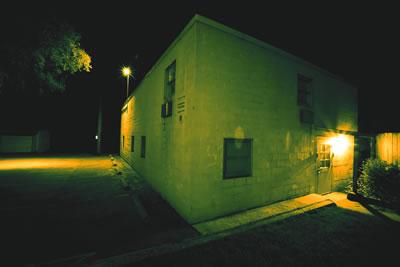Potato Chip Factory Goings-on Remain a Mystery

Nestled behind the President’s House on Church Avenue, the 750-square-foot structure known as the “white building” or “potato-chip factory” was built in 1949 to house the Edison C. Nickel chip factory. It was a nuisance to neighbors like President William Wilcox Edel, who complained about the malodorous scents wafting from it and across his back lawn. Four years after its first bid, Dickinson purchased the building in 1957 with intent to convert it into an ROTC rifle range. Instead, it was leased to federal agencies, including the International Communications Administration (ICA) and the General Services Administration.
Asserting that “security is all-important,” the Department of State’s A.W. Saari wrote that the agency’s equipment was “very noisy.” The ICA later paid $50,000 to block windows and doors, refashion the interior and install acoustical tiles, and the agency’s John Shurman declared that flooding caused by clogged gutters might “seriously affect” a “communications system.” (That system could have been a wall-sized, heat-emitting computer; heat discoloration is still visible on the ceiling of the innermost room.) The ICA also rented a “special typewriter” and darkroom equipment for “Operation Alert 1956.”
So much was happening on site that Dickinson supplied secretaries to lend a hand. In an internal 1963 memo, the college announced that “a confidential government installation” needed additional help.
Demanding disclosure, students staged at least two protests. In March 1968, Dickinsonian editor David Totaro ’69 reportedly interviewed a federal official and toured the building. He confirmed it was an agency safe house, but rumors continued to swirl. In 1970, Students for a Democratic Society pressured the college to investigate.
“Being Dickinsonians, we were curious,” says Durden, who joined ROTC buddies in a stakeout one Friday afternoon that spring, hiding in the bushes behind his current home.
“We aren’t supposed to discuss it,” she says.
Published August 2, 2013